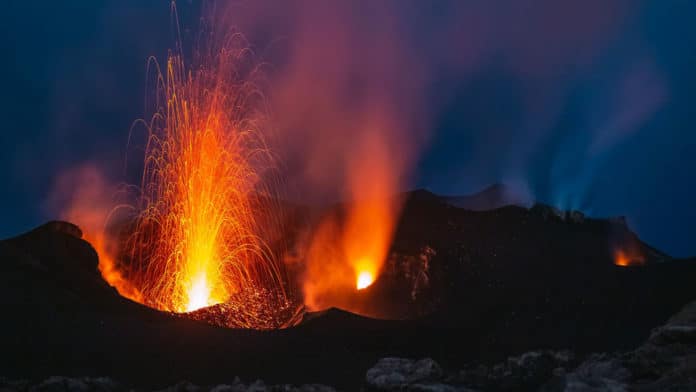According to a recent study, super-eruptions occur when massive magma accumulations created deep under the Earth’s crust rush quickly to the surface and shatter pre-existing rock.
Scientists from the University of Bristol and Scottish Universities Environmental Research Centre have used a model for crystal flow for this study. Their model tracked four previous supervolcano eruptions and found that pre-existing plutons – a body of intrusive rock made from solidified magma or lava – were formed over a few million years prior. Disturbance to these plutons by newly emplaced magmas took place extraordinarily rapidly. While the magma supplying super-eruptions takes place over a prolonged period of time, the magma disrupts the crust and then erupts in just a few decades.
The rarity of these eruptions and their enormous volumes can be attributed to the great variations in time intervals for magma formation and eruption by flow of hot but solid crust in response to the ascent of the magma.
Professor Steve Sparks of Bristol’s School of Earth Sciences explained: “The longevity of plutonic and related volcanic systems contrasts with short timescales to assemble shallow magma chambers before large-magnitude eruptions of molten rock. Crystals formed from earlier magma pulses, entrained within erupting magmas, are stored at temperatures near or below the solidus for long periods before the eruption and commonly have a very short residence in host magmas for just decades or less.”
This study questions the theory that old crystals were stored for a long time at temperatures high enough to have some molten rocks present and shows that the crystals were from plutons that had already been emplaced and had fully hardened (granites).
Crystals from earlier rocks are ejected during volcanic super-eruptions, as scientists have long known. Before the discovery, however, it was widely believed that they had beginnings in warm regions above the rock melting temperatures. There is no logical explanation for the previous studies’ findings that the magma chambers for super-eruptions form quickly. Modeling suggested that extremely prolonged periods of granite pluton emplacement in the upper crust would be required to precede super-volcanic eruptions. Still, there was no evidence to support this hypothesis.
Prof Sparks added: “By studying the age and character of the tiny crystals erupted with molten rock, we can help understand how such eruptions happen.”
“The research provides an advance in understanding the geological circumstances that enable super-eruptions to take place. This will help identify volcanoes that have the potential for future super-eruptions.”
Journal Reference:
- van Zalinge, M.E., Mark, D.F., Sparks, R.S.J. et al. Timescales for pluton growth, magma-chamber formation and super-eruptions. Nature 608, 87–92 (2022). DOI: 10.1038/s41586-022-04921-9
